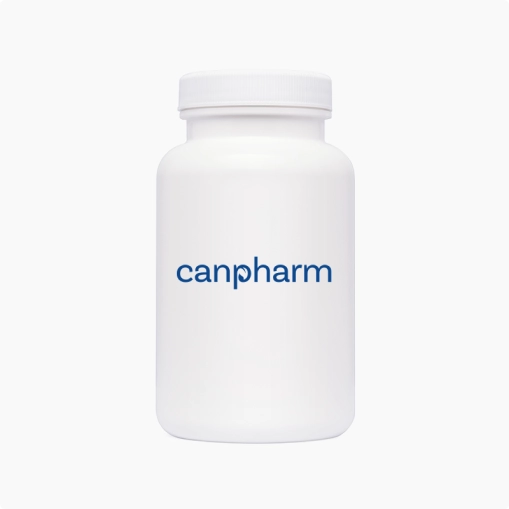
Toujeo (Insulin Glargine)
Out of stock
We will notify you as soon as it becomes available.
-
Description
-
Related Products
-
Related Conditions
Fact Table
| Fact Table | |
|---|---|
| Formula | C267H404N72O78S6 |
| License | FDA approved |
| Bioavailability | ~60% (subcutaneous injection) |
| Legal status | Prescription only |
| Chemical Name | Insulin glargine recombinant |
| Elimination half-life | ~19 hours (duration of action >36 hours) |
| Dosage (Strength) | 300 units/mL (U-300) |
| Pregnancy | Category C – Consult doctor |
| Brands | Toujeo |
| Protein binding | Negligible |
| PubChem CID | 16132438 |
| MedlinePlus | a614038 |
| ChEBI | 8707 |
| ATC code | A10AE04 |
| DrugBank | DB00047 |
| KEGG | D04572 |
| Routes of administration | Subcutaneous injection |
Toujeo (Insulin Glargine) is a long-acting basal insulin analog indicated for the management of hyperglycemia in adults and children 6 years of age and older with type 1 or type 2 diabetes mellitus. It is a more concentrated formulation (300 units/mL) of insulin glargine than standard Lantus (100 units/mL), designed to provide a stable, prolonged insulin release over 24 hours or longer. This extended profile results in a smoother and more predictable blood glucose-lowering effect, with reduced day-to-day variability and a lower risk of nocturnal hypoglycemia. Toujeo is ideal for once-daily administration and supports flexible dosing within a three-hour window.
Directions
Toujeo is administered subcutaneously once daily at the same time each day in the abdomen, thigh, or upper arm. Dose adjustments should be based on individual patient needs, glycemic targets, and blood glucose monitoring. When converting from another insulin regimen, dosage adjustments may be necessary, particularly when transitioning from Lantus or other basal insulins. Toujeo must not be mixed with other insulins or used in insulin infusion pumps. Injection sites should be rotated within the same anatomical region to minimize the risk of lipodystrophy.
Ingredients
Each mL of Toujeo contains 300 units of insulin glargine. Inactive ingredients include glycerol, metacresol, zinc chloride, polysorbate 20, sodium hydroxide (to adjust pH), and water for injection. The solution is clear and colorless, with an acidic pH of approximately 4.0.
Contraindications
Toujeo is contraindicated in individuals with hypersensitivity to insulin glargine or any excipients in the formulation. It should not be used during episodes of hypoglycemia. Intravenous administration is not appropriate due to the risk of severe hypoglycemia and the loss of its prolonged activity.
Cautions
As with all insulin therapies, close monitoring of blood glucose levels is necessary when initiating or adjusting Toujeo. Special care should be taken during transitions between insulin products or regimens. Toujeo has a delayed onset compared to other basal insulins; adjustments should be made gradually to minimize the risk of hyperglycemia or hypoglycemia. Use caution in patients with hepatic or renal impairment, as insulin requirements may be reduced. Certain medications, such as beta-blockers, may mask hypoglycemia symptoms, and alcohol use may exacerbate insulin effects.
Side Effects
The most common and potential side effects of Toujeo include:
- Hypoglycemia
- Injection site reactions (e.g., redness, swelling, discomfort)
- Lipodystrophy
- Allergic reactions (localized or systemic)
- Edema
- Weight gain
Frequently Asked Questions about Toujeo (Insulin Glargine U-300)
How long does it take for Toujeo to show results?
You may see improved fasting blood sugar within a few days, but full effect may take up to 5 days as your dose is adjusted.
Can I inject Toujeo in the same site every day?
No. Rotate injection sites (abdomen, thigh, upper arm) to prevent lipodystrophy (fatty tissue changes) and ensure consistent absorption.
What should I do if I overdose on Toujeo?
Seek emergency medical attention. An overdose can cause severe hypoglycemia, which may require glucose, glucagon injection, or hospitalization.
Can Toujeo be used with a sliding scale?
Toujeo is a basal insulin, not suitable for sliding scale use. It's often used alongside rapid-acting insulin in people requiring intensive insulin therapy.
How should I dispose of used Toujeo pens or needles?
Place used needles in an FDA-approved sharps container or a puncture-resistant household container. Do not throw in the trash unprotected.
Does Toujeo require frequent blood sugar monitoring?
Yes. Regular blood glucose checks are needed, especially when starting, adjusting doses, or during illness or changes in diet/exercise.
Can I drink alcohol while using Toujeo?
Alcohol can increase the risk of hypoglycemia, especially when combined with insulin. Limit intake and monitor your levels if you drink.
What factors may affect Toujeo dosing?
Factors include:
Kidney/liver function
Other medications
Diet/exercise
Illness or stress
Work with your doctor to adjust as needed.
How does Toujeo help lower A1c?
Toujeo helps reduce fasting and overall blood sugar, contributing to a lower A1c, a measure of average glucose over 3 months.
How long is Toujeo good once opened?
An in-use Toujeo pen is good for 56 days at room temperature (below 86°F / 30°C). After that, discard any remaining insulin.
